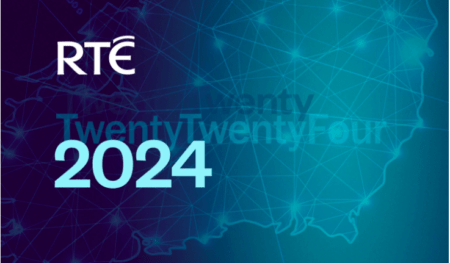September 2020 saw the establishment of the Future of Media Commission in Ireland, which is tasked with considering the various challenges to Irish media and producing a series of recommendations that include how to fund public service media in a difficult environment. Among the challenges being investigated by the Commission are the funding of media, the impact of new technologies and new audience trends and behaviours.
Funding for public service broadcasting in Ireland has been an issue for a number of years now. The main public service broadcaster in Ireland, RTÉ, is funded through a system of TV licence fee collection and commercial advertising. RTÉ’s income has declined over the years, with a deficit in earnings in eight of the past eleven years. In 2017 a governmental committee tasked with examining the issue of the license fee included in its final report a recommendation that the licence fee be applied to all devices rather than just television alone. This would, in theory, capture far more households than the current television licence fee model. A subsequent Working Group on the Future Funding of Public Service Broadcasting recommended in 2019 that the licence fee be eventually “device-independent.”
RTÉ responded to this news with the view that the plans for reform were not happening quickly enough, stating that “The fact is that the number of homes that do not have a traditional television set – but who are nonetheless consuming public service content – is increasing rapidly and the current television licence fee mechanism reflects less and less how people consume public-service content.” In November 2020 RTÉ’s television controller addressed members of government about the issue of licence fee (non)payment, stating that “You’ve got about 140,000 no-TV homes and then you’ve got about 250,000 who don’t pay the licence fee.”
RTÉ has assertively pressed for reform of the licence fee model by emphasising the changing trends in viewing habits and device usage and arguing that this justifies a new licence fee model that includes a much wider range of household audiovisual devices. In making this argument RTÉ has consistently pointed to how RTÉ television is viewed across platforms, noting that audiences are increasingly watching both live and on-demand content on the RTÉ Player. In a number of reports and press releases over the past two years, RTÉ has emphasised its expanded digital provision as well as audience consumption of content across multiple platforms and devices such as the RTÉ news app and the RTÉ Player. For example, in its 2019 annual report, published in January 2021, it used data on increasing viewing on digital platforms and online services to justify the request for licence fee reform. “As media consumption patterns become more complex, the television licence fee mechanism reflects less and less how people consume public-service content.”

Fig. 2: RTÉ Annual Report 2019
In this 2019 annual report as well as RTÉ’s submission to the Future of Media Commission’s public consultation, RTÉ makes the case that it is providing online and digital services, particularly in the form of its RTÉ Player, without gaining sufficient income from this through the current licence fee. In the 2019 annual report, it points to the success of its streaming of the annual television special, the Late Late Toy Show, which it says was watched by 1.7 million across its platforms. The report notes that RTÉ is increasing the volume of content on its Player and lists a number of short form, travel and comedy sketch series that it has commissioned for the Player. Streaming is said to be growing, with a reported 50 million streams occurring on its Player in 2019 alone.
This emphasis on online and digital services is also a key feature of RTÉ’s 2019 strategy document RTÉ 2024. Here RTÉ makes the case that online viewing will play a more central role in its services, with its main channel RTÉ One hosting more live and event television and its second channel RTÉ Two becoming more synthesised with its online platform. It says that “RTÉ One will be stronger and more distinctive than it is today – the biggest media channel in the country – it will be the place where the nation comes together for high quality, Irish, live and appointment to view programming that acts as an antidote to the streamers.” The report also proposes that there will be a clearer relationship between RTÉ’s television and Player services. “RTÉ’s television services and RTÉ Player will be strategically aligned, each supporting the other – offering compelling linear and on-demand viewing opportunities to fit with audience needs and changing habits.”

Fig. 3: RTÉ 2024
It presents a number of strategies aimed at expanding its digital service. “RTÉ will have enhanced the audiences’ user experience of many of our digital services through mandatory sign-in and personalisation.”
However, elsewhere, RTÉ evidences a lack of confidence in its online provision and its capacity to adapt to changing viewing habits and “digital disruption.” In its submission to the public consultation for the Future of Media Commission, RTÉ refers to a number of challenges it faces in this “transformed media and communications landscape.” This includes loss of audiences to other streaming platforms, declining television advertising revenues (with no corresponding increase in digital advertising), and financial pressures associated with developing services for other platforms such as the RTÉ Player with no corresponding increase in the licence fee funding in order to pay for this. The lack of development of the RTÉ Player has, for example, been a regular subject of criticism in Irish media. The RTÉ submission also speaks of the threat posed by the continued national roll out and improvement of broadband services which, RTÉ notes, will likely increase shifts towards online and digital services, something that RTÉ feels with increase competition with its own services. An additional threat is said to be its lack of control of IP distribution and of its lack of access to consumer behaviour data for digital services. This paints a picture of an organisation ill-prepared to adapt to changing trends in viewing and nervous of the transforming media landscape. At a time when RTÉ is fighting to retain its role as the key provider of public service media, this self-doubt is unhelpful.
Ultimately, then, the impression gained from the various reports is of an organisation that has not yet been able to keep pace with changing audience behaviours. This is perhaps no news to those who use the RTÉ Player which has been the subject of much criticism both for its lack of content and its poor service. At a time when viewers are vocal in their demands for RTÉ’s streaming platform to be improved, RTÉ has been slow to build confidence in its audience and to make the RTÉ Player a more centralised part of their service. At the moment, television remains the key service offered by the organisation. Public complaints have also fed into calls for RTÉ as a public service media provider to be defunded with some questioning why a TV licence should be paid when the Player is poor quality. The Player is, for some, treated as a supplement to RTÉ’s other products rather than a key service in and of itself. This was perhaps reflected in a recent situation whereby a highly criticised TV sketch, which RTÉ itself deemed as falling below its standards, lingered on its online platform for a week before being removed. This event has exacerbated existing concerns about and criticisms of RTÉ, which comes at a time when public service media is already facing many challenges.

Fig. 5: RTÉ Player landing page
Although its online services and its Player are not the primary source of criticism for RTÉ, its calls for new models of and increases in funding while seeming to provide a poor online service have not gone unnoticed by some in government, with one deputy pointing to the absurdity of using RTÉ’s second television channel as a gateway to the dysfunctional Player. The same deputy continued “We all know that online programming will play a significant role in the future and that online on-demand services are needed, but the RTÉ Player can hardly boot itself up in the morning or play a programme without crashing during the advertisements. It cannot be so difficult to get it right, given that Netflix runs seamlessly at any hour of the night or day on any device. If RTÉ is to get its house in order and move online, it should at least get the RTE Player working.” Similar complaints have recently been put to RTÉ representatives in government debates, with one Senator pointing to the reputational damage that RTÉ suffers as a consequence of the Player not functioning properly.
This reputational damage comes at a time when RTÉ is most in need of public and governmental support. The submissions to the Future of Media Commission contain many calls to end public service broadcasting more generally, and to refund RTÉ more specifically. Although the Player is but one criticism among many, it does not help that RTÉ hasn’t quite made the case that it is the public service media of the future. Securing its future means that it needs to address issues regarding its online provision and changing viewer habits today.
Sarah Arnold is a lecturer at Maynooth University. She is author of the forthcoming book Gender and Early Television: Mapping Women’s Role in Emerging US and British Media, 1850-1950. and co-authoring the book Media Graduates at Work: Irish Narratives on Policy, Education and Industry with Páraic Kerrigan and Anne O’Brien. Her previous books include Maternal Horror Film: Melodrama and Motherhood and the co-authored Film Handbook. Her research focuses on viewing spaces and environments of television and film, particularly in the context of gender and emergent technologies. She is a regular contributor to the Critical Studies in Television blog and RTE Brainstorm.






